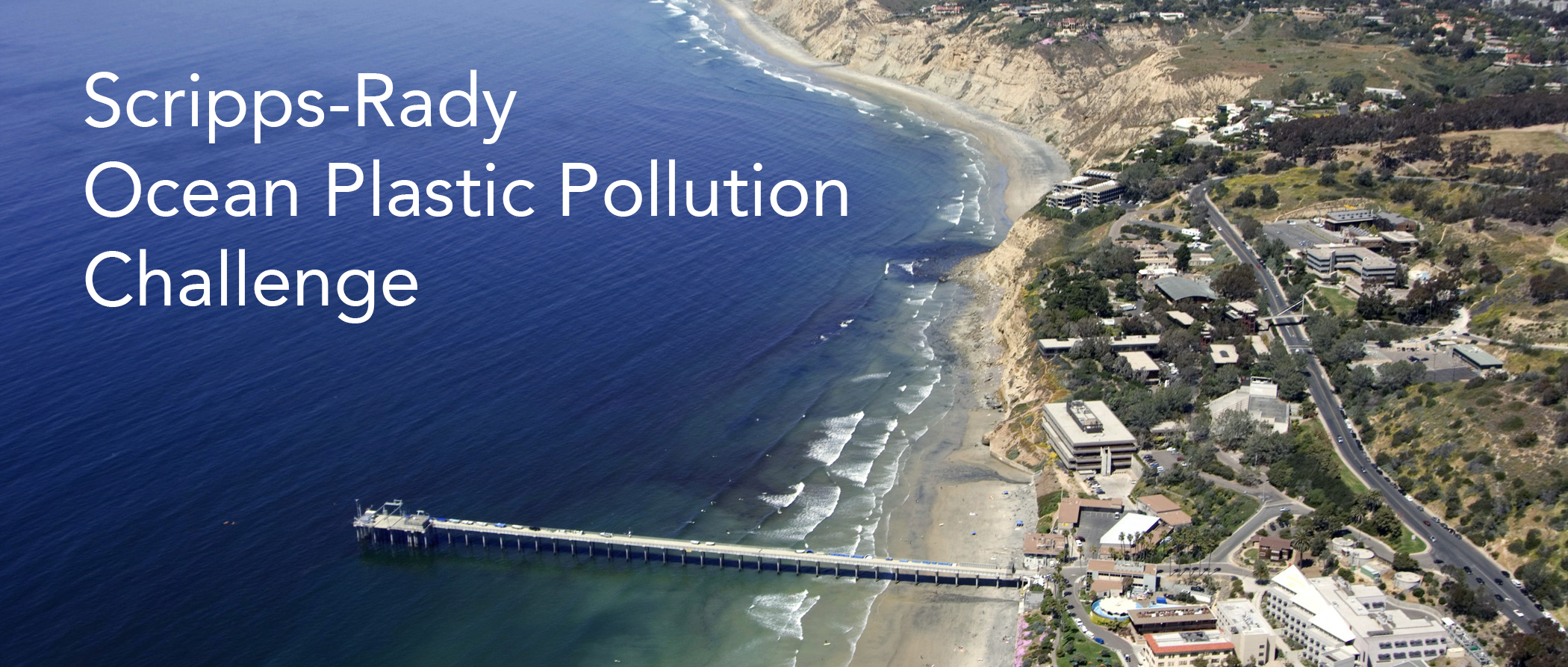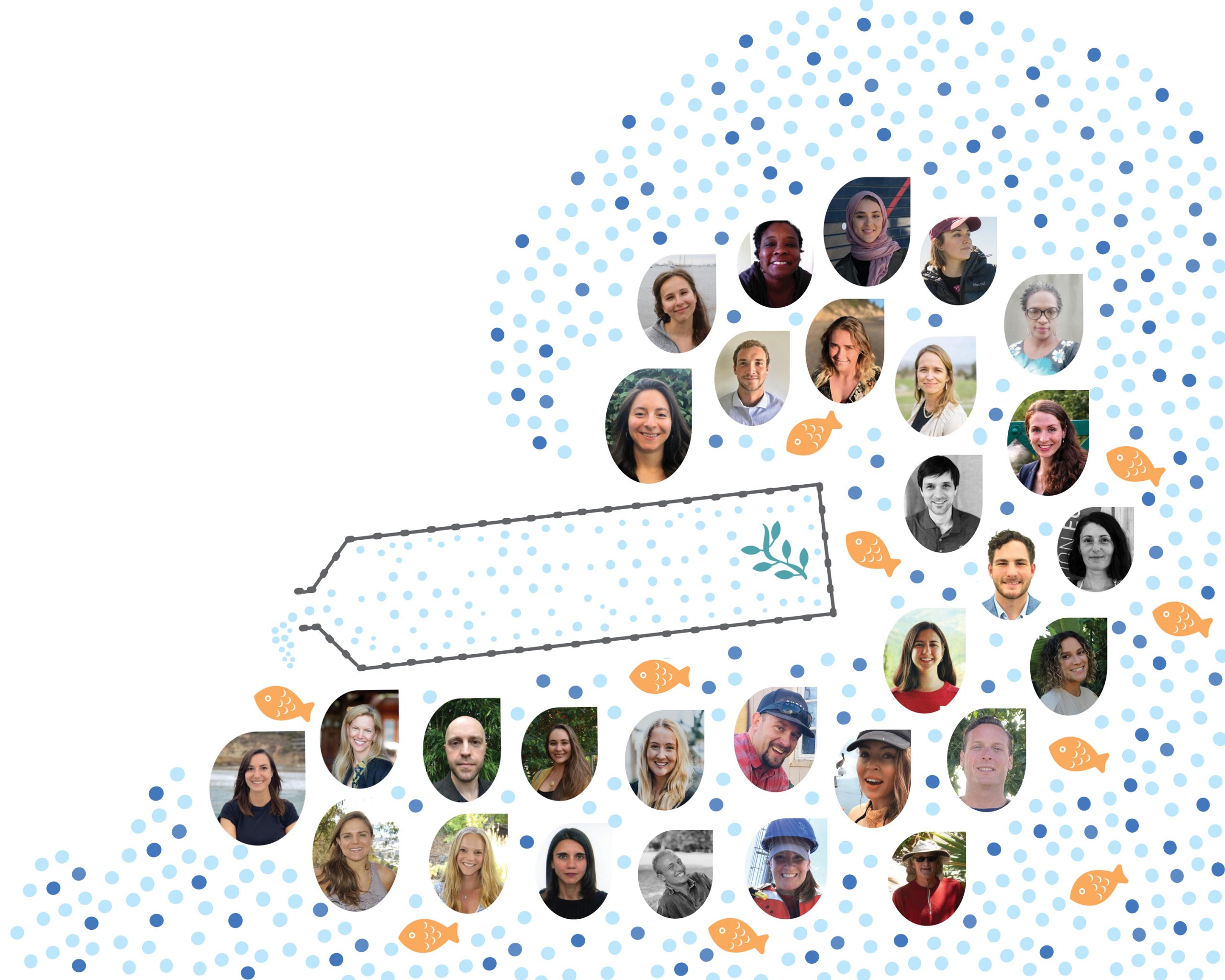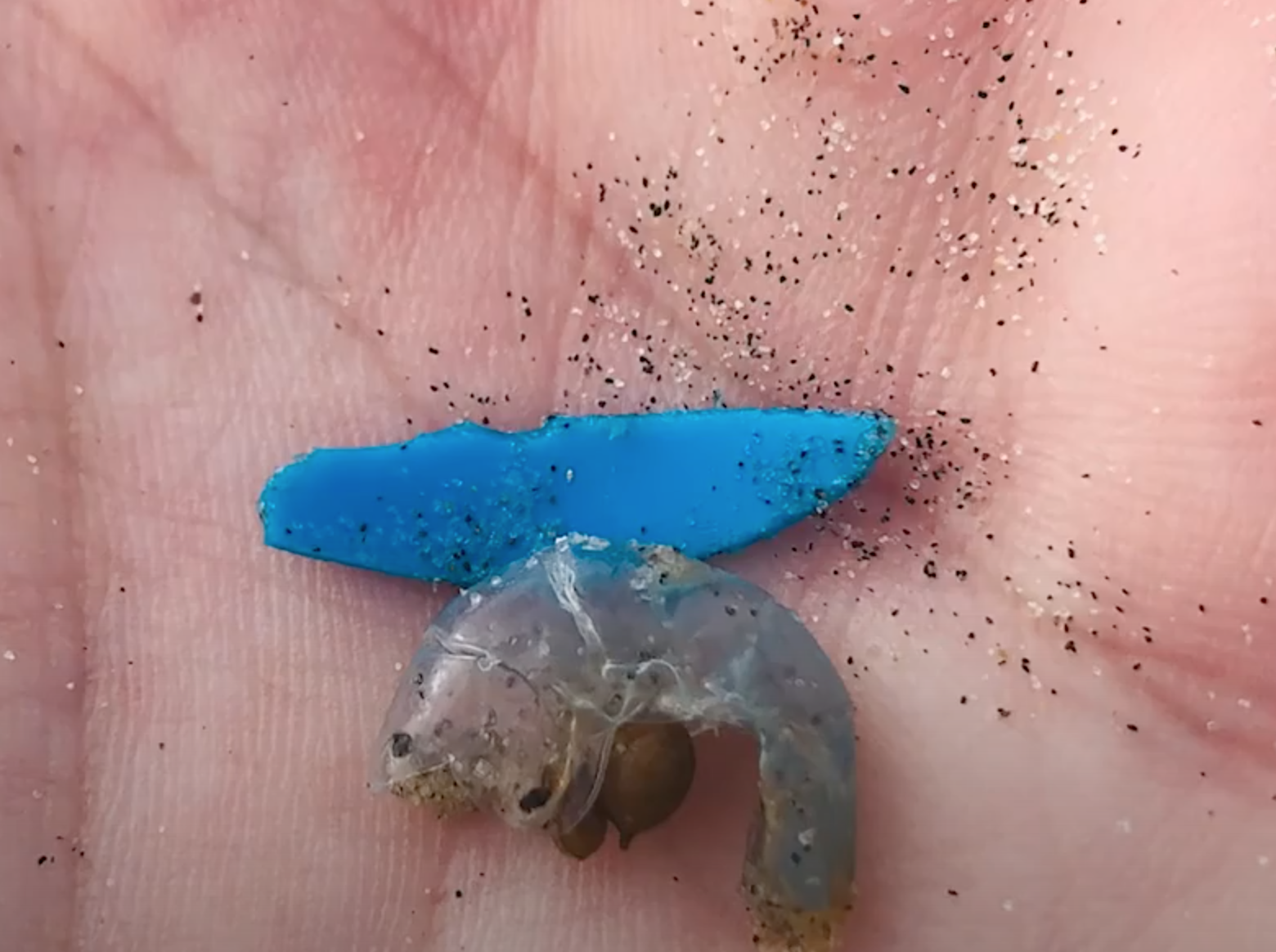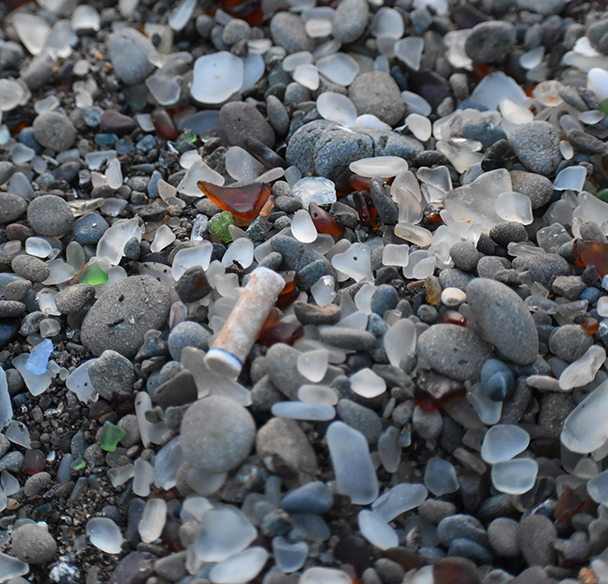
SCRIPPS-RADY OCEAN PLASTIC POLLUTION CHALLENGE
Blog Post: March 18, 2021

Participants are working in four research teams and developing expert briefings to help approach the problem of plastic pollution in California’s marine protected areas. Team members listed below.
Curbing Ocean Plastic Pollution: The Teamwork Begins
By Charlotte Stevenson
March 18, 2021
“There is no problem that is so obviously anthropogenic in origin than marine plastic pollution,” said Professor Stuart Sandin, Co-Director of the Scripps-Rady Ocean Plastic Pollution Challenge and Director of the Center for Marine Biodiversity and Conservation at Scripps Institution of Oceanography. Only invented within the last century, plastic may now be the most abundant substance on earth. Each year approximately 350 million metric tons are produced, and 11 million metric tons are leaked into the ocean1. If we think plastic pollution is ubiquitous now, just imagine the world in 20 years based on the current scientific and economic predictions. Plastic production and leakage into the ocean are predicted to grow 3-4 fold by 20402. Under this ominous forecast, every meter of coastline worldwide would have 50 kg (about the size of a very large dog) of plastic trash scattered across it3.
Over the past two months, the participants in the Scripps-Rady Ocean Plastic Pollution Challenge have learned about these disheartening statistics, but they have also been learning from experts about systemic thinking and change, successful environmental policies, non-greenwashed business plans, effective behavioral psychology, and innovative material companies and their investors. As the teams leave the learning phase of the Challenge and enter the independent research phase, Challenge Co-Dirctor Ayelet Gneezy, Professor of Behavioral Sciences and Marketing, Center for Social Innovation and Impact (CSII) at the Rady School of Management, believes the participants are ready to apply what they have learned. “We have a really serious problem with plastic. But we have a really serious community here ready to work,” she said.
For the next three months, the Challenge participants are divided into four teams focused on four different areas: changing human behavior, evaluating policy solutions, data mapping, and assessing local support of plastic reduction initiatives in the Challenge’s home town, San Diego.
The teams will each produce a white paper intended as an expert briefing to help approach the problem of plastic pollution in California’s marine protected areas. Each paper will present a current state of the team’s specific topic in the state, will address and justify current main research gaps and needs in the team’s focus area, and, finally, will present a novel contribution to their area of focus that will help move California forward in reducing plastic waste in the marine environment.
Dr. Kristen Goodrich, the Coastal Training Program Coordinator of the Tijuana National Estuarine Research Reserve, was the moderator for a course on global and regional perspectives of ocean plastic pollution which the Challenge participants attended in early January. As the participants embark on this next phase of the Challenge, Dr. Goodrich gave some words of guidance. “I'd urge participants as they work in teams to think about what their fellow team members bring to the table - both in knowledge and personal experiences,” she said.
Shelley Moore, Environmental Scientist at the San Francisco Estuary Institute, was the moderator for a course on coastal science and data mapping which the participants also attended in January. Shelley also had some words of advice for the participants. “Be sure to develop clear goals with achievable results,” she said. “Don't try to take on too much as it can become overwhelming, making solutions hard to find.”
Teams have already begun working on their papers and deciding how they will contribute to the state of knowledge about ocean plastic pollution in California. Ideally, these papers can help inform future funding efforts or even policies as California considers the future of its network of marine protected areas. In a final 2-day “hackathon-style” event, the participants will have an opportunity to apply the knowledge gained in these four white papers to creative plastic-reducing proposals that will be presented in front of a panel of judges.
Hopefully, this is where the unique design of the Scripps-Rady Ocean Plastic Pollution Challenge -- accelerated, incubator-style, cross-disciplinary composition -- will begin to demonstrate its ability to generate new, creative, systems-based solutions to the problem of plastic pollution in California’s coastal ocean.
TEAM: Changing Human Behavior
- Chiara Dorigo, Senior Associate at Schaffer&Combs
- Steven Wright, Co-Director 4Walls International
- Hilary Haskell, Project Manager II-Supply Chain Sustainability, San Diego Gas & Electric
- Aubrie Fowler, South Coast Specialist, MPA Collaborative Network
- Kristen Jabanoski, A.I.S., Inc. in support of NOAA Fisheries (National Oceanic and Atmospheric Administration)
- Ozlem Tetik, Ph.D. Student in Marketing, London Business School
- Jake Reynolds, Pro-Environmental Behavioral Science Researcher
TEAM: Evaluating Solutions
- Kara Wiggin, Ph.D. Student at Scripps Institution of Oceanography
- Anna Robuck, Researcher, University of Rhode Island Graduate School of Oceanography/NOAA Nancy Foster Scholar
- Sarah Fischbach, Assistant Professor of Integrated Marketing Communication, Pepperdine University
- Kristina Phipps, Independent Legal and Policy Consultant
- Tanya Torres, California Marine Debris Sea Grant Extension Fellow
- Colin Duncan, Product Development Lead at Forever Wild Seafood
- Ngozi Margaret Oguguah, Researcher, Nigerian Institute for Oceanography and Marine Research
TEAM: Data Mapping
- Pilar Garcia, PhD Structural Geology
- Julie Hopper, Postdoctoral Fellow (University of Southern California)
- Fadwa Bouhedda, Associate Scientist/Biologist for the California Department of Transportation
- Adam Mihalik, Quantitative Strategist
- William Quinn, M.S. Business Analytics Candidate at Rady School of Management, UC San Diego
- Cleo Ninja Stratmann, Ph.D Student in Water, Environment and Urban Systems Laboratory (Leesu, France)
- Jonathan Goodmacher, Principal Geologist, GDS, Inc.
TEAM: Yes! In my Backyard / San Diego
- Alex Ferron, Chair, Surfrider San Diego County
- Lisa Gilfillan, Ocean Conservation and Education Coordinator for WILDCOAST
- Katrina Oprisko, Owner, Earthwell Refill
- Matthew Noto, Greener Horizons L.L.C., Lead Project Coordinator
- Lauren Hackney, Founder of The Sol Work; MBA Candidate at Rady School of Management, UCSD
- Nicholas Carver, Physical Oceanographer, Vice President of the Pedro Point Surf Club
- Elizabeth Plascencia, Master of Environmental Management Candidate, Yale School of the Environment
- Jules Jackson, Founder of Coastal Defenders
- - - - - -
1Pew Charitable Trusts and SystemIQ. (2020). Breaking the Plastic Wave: A Comprehensive Assessment of Pathways Towards Stopping Ocean Plastic Pollution. (pp. 9). https://www.pewtrusts.org/en/research-and-analysis/articles/2020/07/23/breaking-the-plastic-wave-top-findings
2 Ibid, (pp 18).
3 Ibid, (pp 17).

Image courtesy 365 Beach Clean video by Jules Jackson, Challenge participant and Founder of Coastal Defenders.


